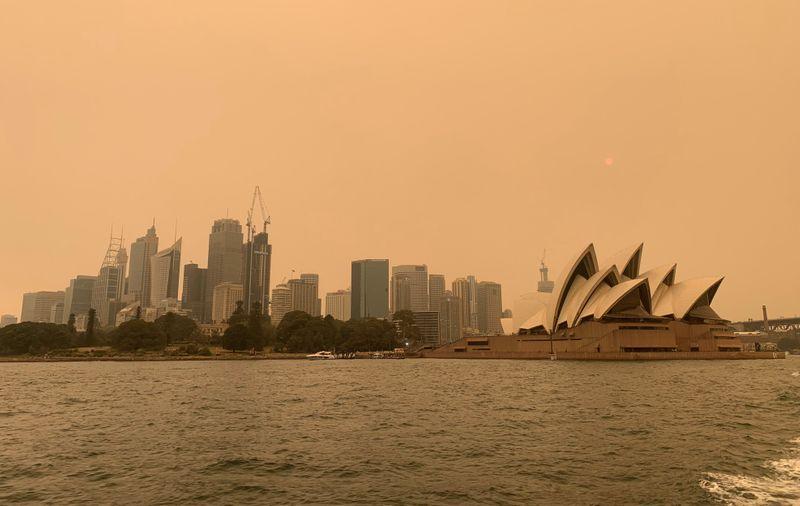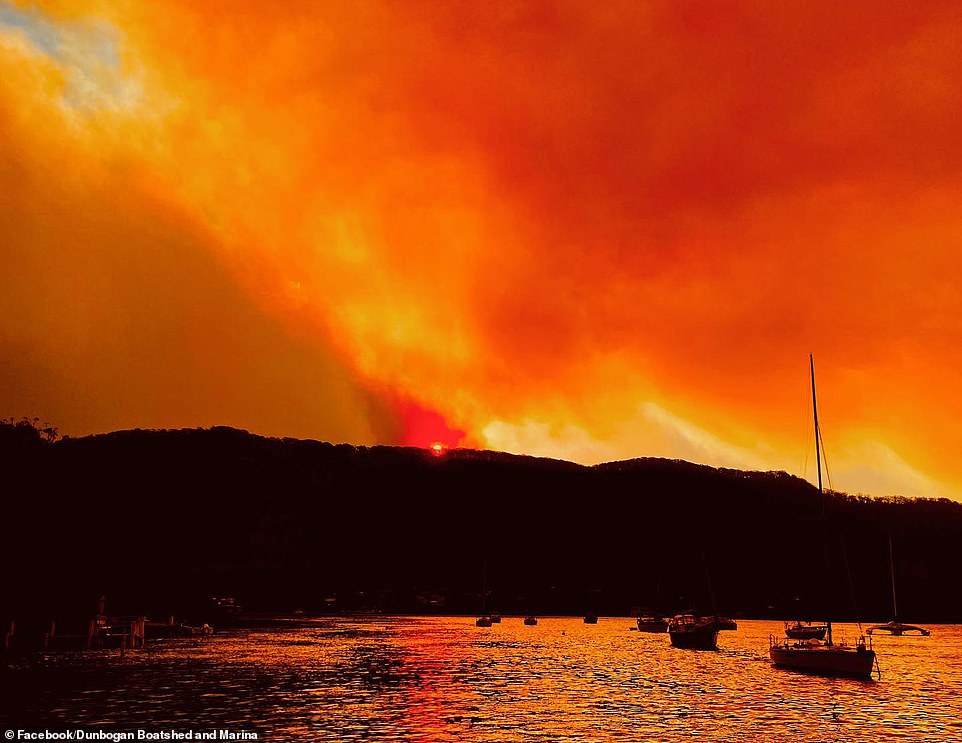“Mega fire” near Sydney may burn for weeks as people struggle to breathe – “We cannot stop these fires, they will just keep burning until conditions ease”

By Lidia Kelly
6 December 2019
MELBOURNE (Reuters) – A giant bushfire on the edge of Sydney, which has blanketed the city in smoke causing a spike in respiratory illnesses and the cancellation of outdoor sports, will take weeks to control but will not be extinguished without heavy rains, firefighters said.
Thousands of weary firefighters, who have been battling bushfires for a month, were on Saturday fighting nearly 100 blazes in New South Wales state.
The mega fire north of Sydney, Australia’s largest city, was created on Friday when several fires merged and was now burning across 335,000 hectares (830,000 acres).
“We need flooding rain to put these fires out. That’s really what is going to stop it,” said the New South Wales Rural Fire Service. “These will take many weeks to put out.”
Bushfires are common in Australia during the hot summer, which begins in December, but this year the fires started much earlier, blamed on soaring temperatures, dry winds and arson.
A three-year drought has left much of Australia tinder dry.
The fires around Sydney have been pumping such vast amounts of smoke into the air that they appear as significant rain on the radars, the Bureau of Meteorology said on Twitter.
New South Wales Health said late on Friday that some 1,140 people had sought medical assistance for breathing issues or asthma in the past week – a quarter more than in a typical week. NSW Ambulance fielded about a third more calls.
Six people have been killed, nearly 700 houses burned down and millions of hectares of land razed. […]
Rural Fire Service Commissioner Shane Fitzsimmons said the worst might still be ahead, with temperatures forecast to rise into the 40 degrees Celsius (104 Fahrenheit) in coming days and no meaningful rainfall expected until late January.
“It’s a tough couple of months ahead yet and we’ve already seen the horrific consequences of fire so far this season,” Fitzsimmons told Australia’s 9News on Saturday.
Neighboring Queensland state was battling some 45 bushfires and temperatures on Saturday as high as 40 Celsius (104 Fahrenheit). [more]
Giant fire near Sydney may burn for weeks as people struggle to breathe
‘Mega fire’ forms north of Sydney
6 December 2019 (AFP) — Several Australian bushfires have combined to form a “mega fire” that is burning out of control across a swathe of land north of Sydney, authorities said Friday, warning they cannot contain the blaze.
New South Wales Rural Fire Service deputy commissioner, Rob Rogers said “there are probably more than eight fires in all” that have merged to form what has been dubbed a “mega fire” in an area of national park forest.
The blaze was burning across 300,000 hectares — an area roughly 60 kilometres (37 miles) across — within an hour’s drive of Australia’s largest city, which was again subsumed in a soup of toxic smoke.
“There is just fire that whole way” said Rogers, who added that firefighters could do little more than get any residents out, protect property and hope for an end to fire-friendly dry and windy conditions.
We “cannot stop these fires, they will just keep burning until conditions ease, and then we’ll try to do what we can to contain them,” he told public broadcaster ABC.

“The best thing we can do is try to protect property and people as much as we can.”
Prolonged drought has left much of eastern Australia tinder-dry and spot fires have raged every day for the past three months.
Bushfires are common in Australia but scientists say this year’s season has come earlier and with more intensity due to a prolonged drought and climatic conditions fuelled by global warming. […]
At a wildlife park in the area, 300 animals were evacuated.
Walkabout Wildlife Park said it had shipped out lizards, dingoes, peacocks and marsupials, as firefighters battled more than 100 fires up and down the eastern seaboard.
“This fire has been doing some crazy things, so we have to be prepared,” general manager Tassin Barnard told AFP. […]

An estimated two million hectares have burned — the size of some small countries — across a region spanning hundreds of kilometres (miles).
The fires have taken a toll in Sydney and other major cities, which have been blanketed in toxic smoke for weeks and occasionally sprinkled with snow-like embers.
Fitzsimmons said he could not “overstate the effect that this profound drought is having” as he warned of a long, painful summer ahead.
“There is an absolute lack of moisture in the soil, a lack of moisture in the vegetation… you are seeing fires started very easily and they are spreading extremely quickly, and they are burning ridiculously intensely.” [more]